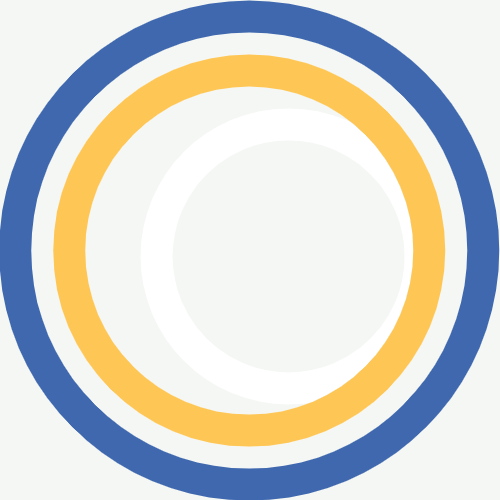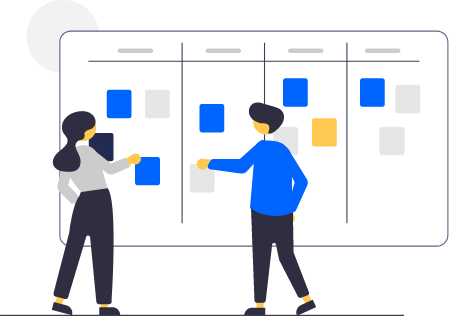RESOLVE COMMUNICATION GAPS: A KEY TO CUSTOMER ACQUISITION

For a B2C business, the ability to effectively communicate with a mass of customers helps the business to grow in the competitive market. In a subscription business, continuous communication is very important, which acts as feedback upon which the business can keep improving.
Now, customer communication is just not limited to 24X7 supports, but every minor frequent communication during their subscription cycle, like customer payment alert, service renewal, identification update and many more.
This whitepaper will walk you through the following:
- How optimizing customer communication leads to business growth
- How unnoticed challenge can lead to lower efficiency
- Recommendation on customer acquisition
Overview
A business is by the customer and for the customer. In the massive effort of presales and sales, most of the businesses often lack emphasis on after-sales services. Switching to a new product has now become easy and the customers now have a wide number of choices. The only way to acquire a new customer is to retain the existing ones.
Earlier when competition was less, the business did not invest much effort for customer communication, because customers had limited options to switch, also their expectations were low. However, with the growth of competition, customers became more aware of their desired services. Introduction to the smartphone, internet, and various social media channels has increased service expectations and communication touchpoints. Other than improving the quality of services, the business can now focus a lot on their customers.
How optimizing customer communication leads to business growth
Customer communication is the utmost important factor for a successful business. When a customer enters the cycle of services, they would like to settle for a long-term purchase. It is always necessary to keep their interest with ongoing services and therefore communication platforms could be leveraged for offers & promotions, notifications, requests, on-demand access to information, etc.
A communication gap happens when the customer is unable to get desired information on time. The gap could be with language preferences, inaccessible file format, delayed notification or no notification, inconvenient interface, etc. These small unnoticeable factors lead to customer dissatisfaction and continuous anomalies may pile up consumer complaints.
Let’s say, a customer wants to subscribe to your product, the possible steps could be:
- Understanding the offers and plans
- Registering self with the services
- Consuming the services as per subscription and meanwhile getting charged for the same
- Receiving invoice with the due date
- Making payment against the invoice
In the above process, the customer wants to be informed about the progress of each step. Presenting offers and plans in an understandable format supported by a proper interface. Once a customer is on-boarded they need to be notified, so that their verification process can be done via email or SMS. Once their service validity expires, they can be notified for renewal. Notification for payment due dates can help them avoid paying a penalty. Downloading an invoice needs to be convenient enough and should support all file formats via mobile app or Web service. Also, customers can have accessibility to on-demand services. Above all, customer self-care backed by graphical support is important.
The above few examples of communication can help the business to connect with their customer along with services. Now, for a huge customer base, it becomes difficult to organize and process multiple workflows for each customer, for that system needs to have high-speed batch processing ability.
How unnoticed challenge can lead to lower efficiency
Let’s have a look at an example of how a company was facing content generation and distribution gaps and how inadequate process efficiency lowered their average performance of a day. Also, we will talk about how we identified the problems and implemented Truebyl CCM (REACH), JASPER, and Truebyl Integration & Orchestration platform (Truebyl-IO) to overcome those gaps and optimize their process by utilizing cloud technology.
With their existing legacy system, we identified the following problems:
- No proper support of UTF-8 to generate documents across different languages.
- Template design GUI, used for designing templates for different documents, had some basic functional restrictions on GUI design components and a big dependency on language-specific custom fonts.
- API layer for on-demand document generation only worked for PDF and PS – not for other formats like XML, CSV, and HTML.
- No standard process to send notifications (SMS, Email, Mobile app.) to customers.
- Batch process performance was not up to the mark.
- Stability issues (viz. wrong document getting sent to the wrong customer) existed under big production load.
- No optimal utilization of the hardware (viz. memory, CPU).
- Incorrect session opening/closing logic, leading to a higher number of inactive DB sessions.
- Big dependency on Operating system, JDK, and Database versions.
- WYSIWYG aspect was not available. Template designs did not always match the outputs rendered from the system.
To overcome the content generation gaps we implemented REACH and JASPER as following:
Content Generation – PDF and HTML:
The tool used: JASPER - provides all design components to cover our customer’s needs.
- Complex design blocks could be realized using this tool in shorter timelines.
- Provides proper UTF-8 compliance of the generated outputs across different languages.
- Provides possibility to make changes in local blocks and test those blocks independently using preview feature, where the designer could choose appropriate output document format (PDF, HTML, etc.).
- Performance of the preview generated could be easily measured, as it provides statistics about the time is taken for generating the content.
- WYSIWYG is achieved to the utmost level. There is practically no difference in the design and the outputs rendered.
- User guides and open forums for this tool provide a lot of information and help in knowledge sharing/gathering.
Content Generation – XML, CSV, TEXT, JSON:
The tool used: REACH (Truebyl CCM Platform) - provides all design components to cover our customer’s needs.
- Complex logical blocks could be realized using the tool in smart and effective ways, thereby reducing time/effort.
- Any logical block is configurable and changeable very fast.
- It provides full UTF-8 compliance of the generated outputs across different languages.
- Provides the possibility to make changes in local blocks and test those blocks independently.
Content Generation – Orchestration, On-demand API, and Batch processing
The tool used: REACH - provides all design components to cover our customer’s needs.
- API gateway is provided by Truebyl-IO to generate document formats (pdf, Html, XML, CSV, txt) both in online mode as well as a batch.
- For online mode, the request comes from many external systems with necessary parameters to generate content and return to the caller, either in base-64 encoded format, or, as a URL, to download the content.
- Speed for content generation in batch mode is lightning fast, as a result, in case of any production outages, there is a possibility to combine document generation for more than one group of customers, and desired results are achieved in no time.
Content Distribution (Batch Mode) – Email, SMS, FTP, Push Notifications, Web Services:
The tool used: REACH - provides all channel integration components to cover our customer’s needs.
- Separate orchestration rules are configured using Truebyl-IO to merge/sort PDF files and send them to printing agencies.
- Customers that have accounts in internet self-care get emails about intimations that their documents are available on self-care. These emails have special HTML contents that could be designed outside and configured in email bodies with necessary dynamic slots.
- Customers that would like to receive documents as attachment of emails are also sent using REACH using similar orchestrations described in the above step.
- Choosing appropriate email profiles based on conditions is orchestrated using Truebyl-IO and they could be changed easily.
Content Distribution (Notifications) – Email, SMS, Push Notifications, Web Services:
The tool used: REACH - provides all channel integration components to cover our customer’s needs.
- REACH allows the possibility to send on-demand notifications to customers by Emails, SMS, or by Mobile app push notifications.
- Notification requests come from different systems, and they are sent through REACH using configured API, setting appropriate calendar logic, and splitting them into time slots, before sending. There is also the possibility to configure business start and end times for every calendar when the notifications could be sent to customers, considering weekends and local holiday aspects.
- Content of these notifications is also orchestrated using Truebyl-IO and the rules can be changed easily.
- Performance of notification sending is lightning fast, compared to the legacy system.
Hardware Utilization:
- Server RAM usage and CPU utilization are optimum during heavy loads.
- Session management is done properly, when not in use, sessions are closed properly.
- Tomcat, used as a web server to host all the services, utilizes all the threads from the thread pool effectively.
- There is no bottleneck or delay in any step.
After implementing REACH, JASPER and Truebyl Integration & Orchestration platform, we measured their operation performance by the following metrics:
- For 100K customer bills, the process finishes in ~ 2 hours. For the whole month, in total is generated: ~400K – 450K bills. In short, inside business hours, it is possible to generate bills for the whole customer base.
- 100K customer documents reach their mailbox in ~ 1.5 hours.
- Notifications that need to be sent to the whole customer base (viz. 200-250K customers) are sent in ~3 hours. In short, inside business hours, it is possible to send some notifications to the full customer base. This is mainly effective when there is some new campaign launch or there is some network outage, where, all customers need to be notified, inside business hours, about the event.
- Server RAM is reduced from 34GB (used by the old solution) to 26GB (16 GB used by REACH, with a 10GB headroom).
- CPU utilization (core-wise), during heavy loads, has never reached above 60-70%.
- The maximum DB session limit for REACH was reduced from 800 (used by the old solution) to 500 max. The observed DB sessions are around the 350-400 mark during heavy loads.
Conclusion:
Acquiring new customers takes the effort to retain present customers. Having an efficient system that can handle your business requirement will always act upon your ROI. The key metrics of business performance depends on Sales, Customer and Revenue generated.
REACH offers you a platform to connect with your consumers effectively and efficiently. You can centralize your communication for all landscape systems, get easy integration with other apps and personalize content for your customers.
Reach to us Today!



